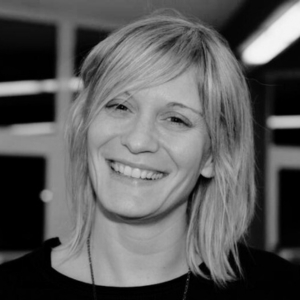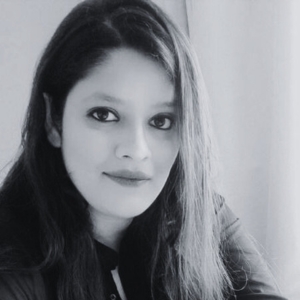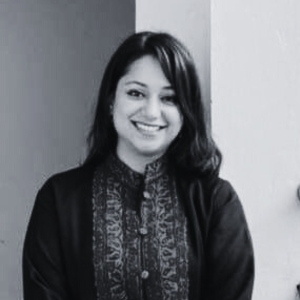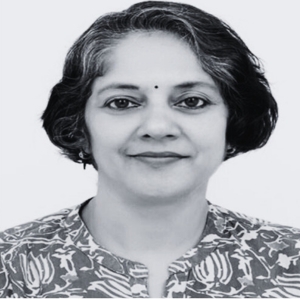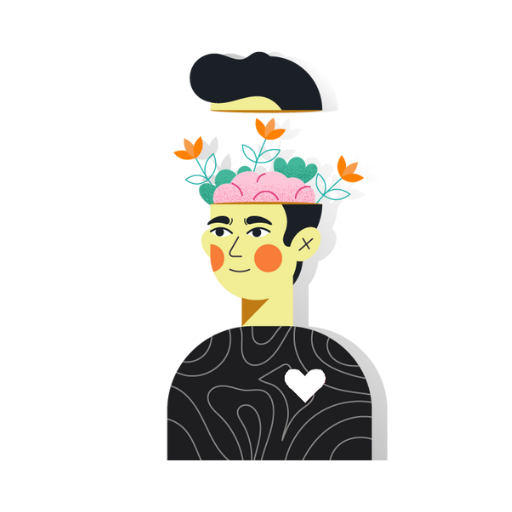IB Biology HL Paper 1 Question Bank
The IB Biology HL Paper 1 Question Bank is a resource that can be used by students to help them prepare for their exams. The Question Bank contains a wide range of questions that cover all of the topics that are typically covered in an IB Biology HL Paper 1 exam. The questions in the Question Bank are designed to test a student’s knowledge and understanding of the material. The Question Bank is an invaluable resource for any student who is preparing for their IB Biology HL Paper 1 exam, and it is sure to help them improve their chances of success.
Biology Higher Level Paper 1
Time: 1 hour
Instructions to candidates
- Do not open this examination paper until instructed to do so.
- Answer all the questions.
- For each question, choose the answer you consider to be the best and indicate your choice on the answer sheet provided.
- The maximum mark for this examination paper is [40 marks].
1.) The components of a nucleosome are:
A. ribosomal RNA and DNA
B. 8 histone proteins and DNA
C. 8 histones proteins in a ball + 1 further histone
D. 9 histone proteins and DNA
Solution: D
Explanation: There are 9 histone proteins and DNA in a nucleosome
2.) Which of the following statements are correct about the structure of DNA?
A. The purine base cytosine is linked to the pyrimidine base guanine through three
hydrogen bonds.
B. The sugar-phosphate strands are antiparallel and linked by complementary base
pairing.
C. The bases are linked to each other through a 3’–5′ linkage.
D. Complementary base pairing of guanine with cytosine and adenine with uracil
means that the two sugar-phosphate strands lie parallel.
Solution: B
Explanation: Complementary base pairing is the phenomenon wherein DNA, guanine always binds to cytosine and adenine always binds to thymine.
3.) What does DNA replication consist of?
A. The enzymes DNA ligase and RNA primase can be found on the lagging strand.
B. Okazaki fragments are produced by DNA polymerase I and DNA polymerase III
on the leading strand.
C. On the lagging strand, the RNA primer is synthesised by RNA primase and then
converted into a DNA strand with the enzyme DNA polymerase III.
D. The enzyme DNA polymerase III uses deoxynucleoside triphosphates to build a
new DNA strand only on the leading strand.
Solution: A
Explanation: DNA ligase fuses together Okazaki fragments on the lagging strand during replication.
4.) What type of bond holds together the two strands of DNA?
A. Hydrogen bonds
B. Covalent bonds
C. Ionic bonds
D. Van der Waals forces
Solution: A
Explanation: The two strands of DNA are held together by hydrogen bonds between the nitrogenous bases. Adenine (A) pairs with thymine (T) through two hydrogen bonds, while guanine (G) pairs with cytosine (C) through three hydrogen bonds.
5.) What is the function of the alveoli in the respiratory system?
A. To transport oxygen to the lungs
B. To filter the air we breathe
C. To warm and humidify the air we breathe
D. To exchange gases with the bloodstream
Solution: D
Explanation: The alveoli are tiny air sacs located in the lungs where gas exchange occurs between the lungs and the bloodstream. Oxygen from the air diffuses into the bloodstream, while carbon dioxide diffuses out of the bloodstream and into the alveoli to be exhaled.
6.) Which of the following statements about the link reaction and Krebs cycle is correct?
A. Pyruvate in the mitochondrial matrix is oxidised to acetyl CoA.
B. At the end of the link reaction, coenzyme A is recycled back into the cytoplasm
to combine with another pyruvate molecule.
C. During one rotation of the Krebs cycle there are three decarboxylation reactions.
D. The link reaction occurs in the mitochondrial matrix and Krebs cycle occurs on the
mitochondrial cristae.
Solution: A
Explanation: Pyruvate—three carbons—is converted to acetyl CoA, a two-carbon molecule attached to coenzyme A.
7.) Which of the following statements accurately describes the function of the electron transport chain during cellular respiration?
A. It converts glucose into ATP
B. It oxidizes NADH and FADH2 to produce ATP
C. It reduces oxygen to produce ATP
D. It produces ATP through substrate-level phosphorylation
Solution: B
Explanation: The electron transport chain is the final stage of aerobic cellular respiration, where most of the ATP is produced. During this process, electrons from NADH and FADH2 are transferred through a series of electron carriers (such as cytochromes and flavoproteins) to oxygen, the final electron acceptor, creating a proton gradient across the inner mitochondrial membrane. The energy from this gradient is then used to drive ATP synthesis by ATP synthase.
8.) A fruit fly of genotype GgTt was test crossed. The off spring genotype ratio was 1 : 1. The reason for this was:
A. The genes are assorted independently.
B. The genes were linked and crossing over occurred.
C. The genes were linked and no crossing over occurred.
D. Non-disjunction had taken place.
Solution: A
Explanation: The Principle of Independent Assortment describes how different genes independently separate from one another when reproductive cells develop.
9.) What is an example of defense?
A. During the process of blood clotting, thrombin causes the release of clotting factors
from the platelets.
B. Active immunity occurs as a result of the body being challenged by antigens.
C. Monoclonal antibodies are produced by fusing a hybridoma cell with a myeloma cell.
D. As a result of vaccination, the primary responsibility of the body will be greater when it
is invaded by an antigen.
Solution: B
Explanation: When there is exposure to disease, active immunity occurs as a result of the body being challenged by antigens.
10.) Which of the following statements about muscles and movement is correct?
A. During muscle contraction, the distance between Z lines decreases, and the dark bands
get wider but the light bands get narrower.
B. Bones are held together at a joint by tendons, which also protect the joint.
C. Synovial fluid, secreted by the cartilage, lubricates the joint to prevent friction.
D. The elbow is an example of a ball-and-socket joint.
Solution: A
Explanation: A sarcomere is defined as the distance between two consecutive Z discs or Z lines; when a muscle contracts, the distance between the Z discs is reduced.
11.) In which of the following ways does the structure of DNA differ from RNA?
A) RNA contains deoxyribose sugar while DNA contains ribose sugar.
B) RNA contains uracil while DNA contains thymine.
C) RNA is double-stranded while DNA is single-stranded.
D) RNA is composed of nucleotides while DNA is composed of amino acids.
Solution: B
Explanation: RNA and DNA are both nucleic acids composed of nucleotides, but there are differences in their structure. One major difference is the sugar component – RNA contains ribose sugar while DNA contains deoxyribose sugar. Another difference is the base composition – RNA contains uracil while DNA contains thymine. RNA can be single-stranded or double-stranded, while DNA is always double-stranded.
12.) In photosynthesis, what is the source of electrons for the light-dependent reactions?
A) Carbon dioxide
B) Water
C) Glucose
D) Oxygen
Solution: B
Explanation: In photosynthesis, the light-dependent reactions occur in the thylakoid membrane of the chloroplasts. During these reactions, light energy is absorbed by chlorophyll, which is used to generate ATP and NADPH. Water molecules are split in the process, providing electrons that are used to replace the ones lost by chlorophyll. Oxygen is released as a byproduct of this reaction.
13.) Which of the following describes the process of transcription?
A) The DNA double helix unwinds and separates, and mRNA is synthesized using the template strand as a guide.
B) The mRNA molecule is translated into a protein molecule.
C) The ribosome reads the mRNA sequence and assembles the corresponding amino acid sequence.
D) The protein molecule is broken down into its component amino acids.
Solution: A
Explanation: Transcription is the process by which DNA is used to synthesize RNA) During transcription, the DNA double helix unwinds and separates, and an RNA polymerase enzyme synthesizes a complementary RNA molecule using one of the DNA strands as a template. In eukaryotic cells, this RNA molecule is processed and transported out of the nucleus, where it serves as the template for protein synthesis in the cytoplasm.
14.) What process occurs during interphase?
A) DNA replication
B) Cell division
C) Mitosis
D) Cytokinesis
Solution: A
Explanation: Interphase is the period of the cell cycle during which the cell grows and replicates its DNA) This phase is divided into three subphases: G1, S, and G2.) During the S phase, DNA replication occurs, in which each chromosome is duplicated to form two identical sister chromatids. Mitosis and cytokinesis occur during the M phase of the cell cycle, after interphase is complete.
15.) Which of the following is a characteristic of a dominant allele?
A) It is always expressed in the phenotype of a heterozygous individual.
B) It is always more common in a population than a recessive allele.
C) It is always associated with a harmful trait.
D) It is always inherited from the mother.
Solution: A
Explanation: In genetics, dominant alleles are those that are always expressed in the phenotype of a heterozygous individual.
16.) What is the function of the cell membrane in a prokaryotic cell?
A) To protect the cell from external forces
B) To regulate the movement of substances into and out of the cell
C) To control the cell’s metabolic processes
D) To store genetic information
Solution: B
Explanation: The cell membrane in prokaryotic cells serves to regulate the movement of substances in and out of the cell. It is selectively permeable and allows for the transport of nutrients and waste products.
17.) Which of the following processes results in the formation of two genetically identical daughter cells?
A) Meiosis
B) Mitosis
C) Binary fission
D) Crossing over
Solution: B
Explanation: Mitosis is a process of cell division that results in the formation of two genetically identical daughter cells. It is an important process for growth and repair of tissues in multicellular organisms.
18.) What is the role of the Golgi apparatus in the cell?
A) To produce ATP
B) To synthesize proteins
C) To transport and modify proteins and lipids
D) To digest cellular waste
Solution: C
Explanation: The Golgi apparatus plays a key role in the sorting, modification, and transport of proteins and lipids within the cell. It is responsible for the packaging and delivery of these molecules to their final destinations.
19.) Which of the following is not a function of the lymphatic system?
A) Transporting excess fluid back to the circulatory system
B) Absorbing and transporting fats from the digestive system
C) Producing and releasing hormones that regulate metabolism
D) Defending against pathogens and foreign substances
Solution: C
Explanation: The lymphatic system plays a crucial role in maintaining fluid balance, absorbing fats from the digestive system, and defending against pathogens and foreign substances. It is not involved in the production or release of hormones that regulate metabolism.
20.) What is the role of the hypothalamus in the endocrine system?
A) To produce and release hormones that regulate metabolism
B) To secrete digestive enzymes in response to food intake
C) To regulate body temperature and fluid balance
D) To produce and release hormones that regulate other endocrine glands
Solution: D
Explanation: The hypothalamus is a small region of the brain that plays a key role in regulating the endocrine system. It produces and releases hormones that stimulate or inhibit the release of hormones from other endocrine glands throughout the body.
21.) What is the term for the process by which a cell takes in large molecules or particles by engulfing them?
A) Active transport
B) Exocytosis
C) Endocytosis
D) Osmosis
Solution: C
Explanation: Endocytosis is the process by which a cell takes in large molecules or particles by engulfing them. It is an energy-requiring process that is used to bring materials into the cell.
22.) Which of the following is NOT a function of the ribosome?
A) Protein synthesis
B) DNA replication
C) Translation
D) mRNA binding
Solution: B
Explanation: Ribosomes are responsible for protein synthesis, translating mRNA into amino acid sequences. They do not play a role in DNA replication.
23.) In which organelle does photosynthesis occur?
A) Chloroplast
B) Mitochondria
C) Nucleus
D) Endoplasmic reticulum
Solution: A
Explanation: Photosynthesis occurs in the chloroplasts of plant cells. Chloroplasts contain chlorophyll and are responsible for capturing light energy and converting it into chemical energy.
24.) Which of the following statements is true about the structure of a phospholipid?
A) It contains a polar head and a nonpolar tail.
B) It contains a nonpolar head and a polar tail.
C) It is a protein with a lipid component.
D) It is a carbohydrate with a lipid component.
Solution: A
Explanation: Phospholipids are the main component of cell membranes. They consist of a polar head made of a phosphate group and a nonpolar tail made of fatty acid chains.
25.) Which of the following is NOT a type of RNA?
A) mRNA
B) tRNA
C) rRNA
D) DNA
Solution: D
Explanation: DNA is a type of nucleic acid that contains genetic information. RNA, on the other hand, is responsible for protein synthesis and includes mRNA, tRNA, and rRNA.
26.) Haemoglobin is a protein that is responsible for transporting oxygen in the blooD) Which of the following elements is a component of hemoglobin?
A) Calcium
B) Iron
C) Sodium
D) Zinc
Solution: B
Explanation: Haemoglobin is a protein found in red blood cells that contains iron, which is responsible for binding and transporting oxygen in the blood.
27.) Which of the following statements is true about osmosis?
A) It is the movement of water from an area of low solute concentration to an area of high solute concentration.
B) It requires the input of energy from the cell.
C) It is an example of active transport.
D) It is the movement of water from an area of high solute concentration to an area of low solute concentration.
Solution: D
Explanation: Osmosis is the passive movement of water across a selectively permeable membrane from an area of high solute concentration to an area of low solute concentration. It does not require energy input from the cell.
28.) What is the function of the mitochondria in the cell?
A) Protein synthesis
B) Energy production
C) Lipid synthesis
D) Detoxification
Solution: B
Explanation: The mitochondria are the organelles responsible for producing ATP, the main energy currency of the cell. They do not play a role in protein synthesis, lipid synthesis, or detoxification.
29.) Which of the following is a characteristic of prokaryotic cells?
A) They contain a nucleus.
B) They are larger in size than eukaryotic cells.
C) They are multicellular organisms.
D) They lack membrane-bound organelles.
Solution: D
Explanation: Prokaryotic cells are simple cells that lack a nucleus and membrane-bound organelles. They are smaller in size than eukaryotic cells and can be unicellular or multicellular.
30.) What is the characteristic of acid?
A) It has a pH greater than 7.
B) It has a high concentration of hydroxide ions (OH-).
C) It turns blue litmus paper red.
D) It is a good conductor of electricity.
Solution: C
Explanation: An acid is a substance that has a pH less than 7, a high concentration of hydrogen ions (H+), and turns blue litmus paper reD) It is not a good conductor of electricity.
31.) In what way does meiosis differ from mitosis?
A) Meiosis results in four haploid cells, while mitosis results in two diploid cells.
B) Meiosis produces genetically identical cells, while mitosis produces genetically diverse cells.
C) Meiosis does not involve crossing over, while mitosis does.
D) Meiosis only occurs in somatic cells, while mitosis occurs in both somatic and sex cells.
Solution: A
Explanation: Meiosis is a type of cell division that results in the formation of four haploid cells, while mitosis produces two diploid cells. Meiosis also involves crossing over, which allows for genetic diversity, while mitosis does not.
32.) Which of the following statements accurately describes the role of the Calvin cycle in photosynthesis?
A) The Calvin cycle produces ATP and NADPH.
B) The Calvin cycle converts carbon dioxide into glucose.
C) The Calvin cycle occurs in the thylakoid membrane.
D) The Calvin cycle requires sunlight.
Solution: B
Explanation: The Calvin cycle is a series of biochemical reactions that occur in the stroma of the chloroplasts and use ATP and NADPH produced during the light-dependent reactions to convert carbon dioxide into glucose.
33.) Which of the following is a characteristic of a competitive inhibitor?
A) It binds irreversibly to the enzyme.
B) It increases the rate of the reaction.
C) It decreases the rate of the reaction.
D) It does not bind to the active site of the enzyme.
Solution: C
Explanation: A competitive inhibitor is a type of enzyme inhibitor that binds reversibly to the active site of the enzyme, preventing the substrate from binding and decreasing the rate of the reaction.
34.) In the human body, where does gas exchange occur?
A) In the alveoli of the lungs
B) In the bronchi
C) In the trachea
D) In the diaphragm
Solution: A
Explanation: Gas exchange, the process by which oxygen is taken in and carbon dioxide is released, occurs in the alveoli of the lungs, where oxygen diffuses into the blood and carbon dioxide diffuses out.
35.) What is the role of the hypothalamus in the endocrine system?
A) It produces hormones that regulate blood sugar levels.
B) It releases hormones that control the menstrual cycle.
C) It controls the release of hormones from the pituitary gland.
D) It regulates the production of insulin.
Solution: C
Explanation: The hypothalamus is a small region of the brain that acts as a control center for the endocrine system. It produces releasing hormones that stimulate the pituitary gland to release hormones that regulate various bodily functions.
36.) What is the primary function of the circulatory system?
A) To provide oxygen and nutrients to the body’s cells
B) To filter waste products from the blood
C) To produce hormones that regulate bodily functions
D) To remove excess water from the body
Solution: A
Explanation: The circulatory system, which includes the heart, blood vessels, and blood, is responsible for transporting oxygen and nutrients to the body’s cells, as well as removing carbon dioxide and other waste products.
37.) Which of the following correctly describes the role of the T cells in the immune system?
A) They produce antibodies that bind to and neutralize pathogens.
B) They destroy infected cells and tumor cells.
C) They produce cytokines that activate B cells.
D) They help to coordinate the immune response.
Solution: B
Explanation: T cells are a type of white blood cell that play a key role in the immune system by recognizing and destroying infected cells and tumor cells.
38.) Which of the following is a key difference between DNA and RNA?
A) DNA is a single-stranded molecule, while RNA is double-stranded.
B) DNA contains uracil, while RNA contains thymine.
C) DNA contains deoxyribose sugar, while RNA contains ribose sugar.
D) DNA is a linear molecule, while RNA is circular.
Solution: C
Explanation: DNA and RNA are both nucleic acids, but they differ in a number of key ways. One of the main differences is the type of sugar they contain. DNA contains deoxyribose sugar, while RNA contains ribose sugar.
39.) Which of the following is an example of a biotic factor in an ecosystem?
A) Sunlight
B) Soil pH
C) Temperature
D) Predation
Solution: D
Explanation: Biotic factors are living components of an ecosystem, such as plants, animals, and microorganisms. Predation, the act of one organism killing and consuming another organism, is an example of a biotic factor.
40.) Which of the following is a type of natural selection in which individuals with extreme phenotypes have higher fitness than individuals with intermediate phenotypes?
A) Stabilizing selection
B) Directional selection
C) Disruptive selection
D) Artificial selection
Solution: C
Explanation: Disruptive selection is a type of natural selection in which individuals with extreme phenotypes have higher fitness than individuals with intermediate phenotypes. This can lead to the divergence of a population into two distinct groups.
Our Expert Tutors!
- 12+ Years
Cat 1 – ESS and Cat 2 – Biology. Chief of the IB program. Mentored 320+ students across various curricula.
- 24+ Years
IBDP Physics HL / SL. IGCSE Physics. A-level Physics (AQA, CIE, Edexcel, OCR, and WJEC). IGCSE Physics (AQA,CIE, OCR & Edexcel)
- 9+ Years
IBDP Cat 1 – Business Management, IBDP Cat 1 – TOK. Taught over 130+ students across 4+ countries.
- 9+ Years
IBDP Cat 1 & 2 November 2019. Specializes in Global Politics. Many students scored 7s; mentors 200+ students in assessments.
- 16+ Years
Specializing in Mathematics: Analysis and Approaches (HL & SL), Mathematics: Applications and Interpretation (HL & SL), and MYP (Mathematics).
- 18 + Years
IBDP Cat 1 – Chemistry, IBDP Cat 3 – IA Chemistry, IBDP Cat 1 – TOK. Helped 2 out of 3 students achieve a 7 in IB Chemistry.


